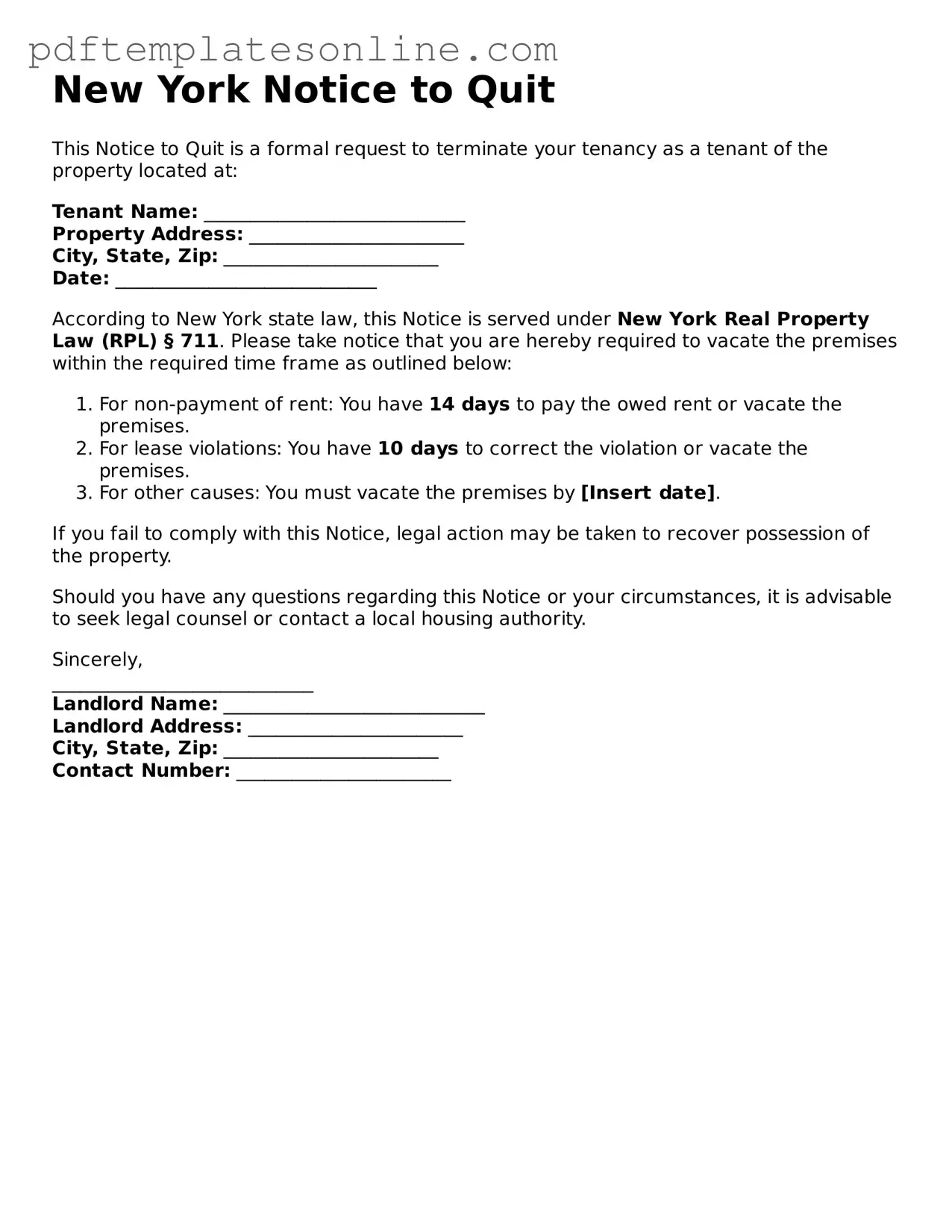Official New York Notice to Quit Document
The New York Notice to Quit form is a legal document that a landlord uses to inform a tenant that they must vacate the rental property. This notice serves as a formal request for the tenant to leave, often due to non-payment of rent or lease violations. Understanding this form is crucial for both landlords and tenants to navigate the complexities of rental agreements in New York.
Access Notice to Quit Editor Now
